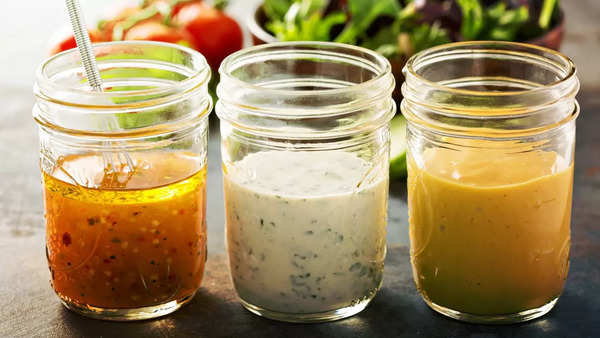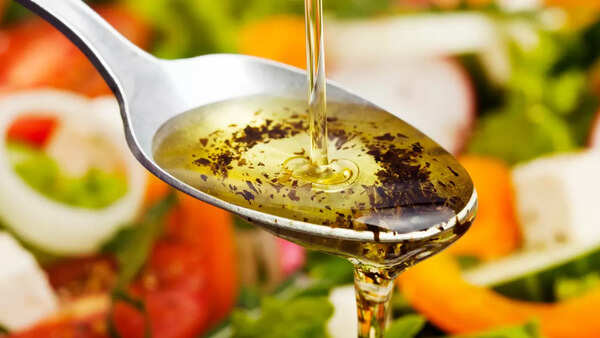Choose heart-healthy oils
The base of any good salad dressing is the oil.Opt for heart-healthy oils such as extra virgin olive oil, avocado oil, or flaxseed oil. These oils are rich in monounsaturated fats and omega-3 fatty acids, which can help reduce inflammation and improve heart health. Avoid using highly processed vegetable oils like canola or soybean oil, which can contain unhealthy trans fats.

Use fresh ingredients
Fresh ingredients can elevate the flavour and nutritional value of your salad dressing. Use freshly squeezed lemon or lime juice instead of bottled versions. Fresh garlic, ginger, and herbs like basil, parsley, and cilantro can add a burst of flavour and antioxidants. Fresh ingredients ensure that you get the most out of your dressing in terms of taste and health benefits.
Balance acidity and sweetness
A good salad dressing strikes a balance between acidity and sweetness. Vinegars such as apple cider, balsamic, or red wine vinegar add the necessary tang. For sweetness, instead of sugar, try natural sweeteners like honey, maple syrup, or agave nectar. This balance enhances the flavour of your salad without adding empty calories.

Experiment with different vinegars
Vinegars are a key component of many salad dressings. Each type of vinegar brings its unique flavour profile. Balsamic vinegar adds a rich sweetness, apple cider vinegar offers a tangy and slightly sweet flavour, and rice vinegar provides a mild, slightly sweet taste. Experimenting with different vinegars can help you discover new and exciting flavour combinations.
Incorporate healthy fats
Healthy fats can make your salad more satisfying and aid in the absorption of fat-soluble vitamins. Ingredients like avocados, nuts, and seeds are great additions. You can blend avocado into your dressing for a creamy texture or add ground nuts or seeds for a nutty flavour and added nutrients.
Add yoghurt for creaminess
For creamy dressings without the added calories and saturated fats of mayonnaise or sour cream, use Greek yoghurt. Greek yoghurt is high in protein and provides a rich, creamy texture. It also contains probiotics, which are beneficial for gut health.

Season to taste
Seasoning is crucial for a flavourful dressing. Salt and pepper are essential, but don’t be afraid to experiment with other spices and seasonings. Cumin, paprika, turmeric, and chili flakes can add a new dimension to your dressing. Taste as you go and adjust the seasoning to your preference.
Creating your own healthy salad dressing at home is a great way to ensure you are eating wholesome, nutritious food. By choosing heart-healthy oils, using fresh ingredients, balancing acidity and sweetness, experimenting with different vinegars, incorporating healthy fats, adding yoghurt for creaminess, and seasoning to taste, you can make a variety of delicious dressings that enhance the flavour of your salads. Not only will these dressings be healthier than store-bought versions, but they will also be tailored to your taste preferences. Enjoy the process of experimenting and discovering new flavours that make your salads more enjoyable and nutritious.

